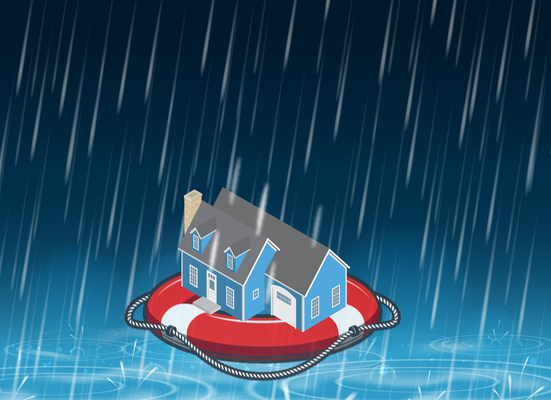
With threat of spring flooding, state officials urge residents to consider flood insurance
SPRINGFIELD – As Illinoisans welcome April showers and May flowers, the Illinois Department of Natural Resources (IDNR), Illinois Department of Insurance (IDOI), Illinois Emergency Management Agency (IEMA) and local emergency management agencies throughout Illinois are reminding Illinoisans to invest in flood insurance to protect their homes and businesses from flooding emergencies.
Wet spring weather can bring an increased chance of spring flooding, regardless of whether homes and businesses are located near bodies of water. With this in mind, state officials are encouraging Illinois residents to consider flood insurance before the next flood occurs.
“Just one inch of water in a mid-sized home can cause up to $25,000 in damages,” said IEMA Director Alicia Tate-Nadeau. “Flood insurance is one of the most important ways for people to financially protect their homes and belongings, allowing them to recover more quickly. But it also is important to act quickly – flooding insurance policies typically take up to 30 days to go into full effect.”
Flood insurance, if you have it, can provide immediate financial assistance regardless of whether a major disaster is declared by the President of the United States. In 2019, devastating river flooding occurred in more than 33 counties and impacted 2.1 million residents. Throughout the 2019 flood season, the National Flood Insurance Program (NFIP) provided more than $19.7 million to Illinois homeowners who submitted flood insurance claims.
“Illinoisans need only think back to 2019 to recall flooding along the Illinois and Mississippi Rivers for a reminder that the threat of flooding in Illinois is always present. Still, less than 1 percent of Illinois residents have flood insurance,” said IDNR Director Colleen Callahan. “The IDNR administers the NFIP in Illinois to help mitigate some of the risk associated with flooding. The program not only protect homes and businesses in the event of a flood, but also helps mitigate perennially flooded areas, reducing the risk of flooding in the future. It really is a win-win for both the community and policy holders.”
Managed by the Federal Emergency Management Agency (FEMA), the NFIP enables homeowners, business owners and renters in communities that participate in the program and adopt local floodplain regulations to purchase federally backed flood insurance. Although nearly 90 percent of communities in Illinois participate in the NFIP, a few communities in Illinois have not adopted local floodplain regulations and have not enrolled in NFIP.
“Homeowners should purchase flood insurance through the private insurance market if their communities do not participate in the NFIP. An insurer or licensed agent can offer private flood insurance to help protect property and personal belongings,” said IDOI Acting Director Dana Popish Severinghaus. “Flooding is the most frequent and costly disaster in the U.S., and private flood policies may provide higher amounts of coverage than the NFIP. Still, homeowners should first find out if they’re eligible to purchase a preferred risk policy (PRP) through NFIP which may be available even they do not live in a floodplain. Our IDOI insurance analysts can help answer questions about purchasing private flood insurance.
Flood Insurance Rate Maps (FIRMs) can help you determine whether your property is located in a high-risk or a moderate- to low-risk area. These maps can be found online at http://msc.fema.gov/portal/search . Additional questions can be directed to a FEMA mapping specialist toll free at 1-877-336-2627. To find out if your community is enrolled in NFIP, visit https://www.fema.gov/cis/IL.html. For additional information about flood insurance, visit https://www.insureuonline.org/insureu_special_flood.htm.












